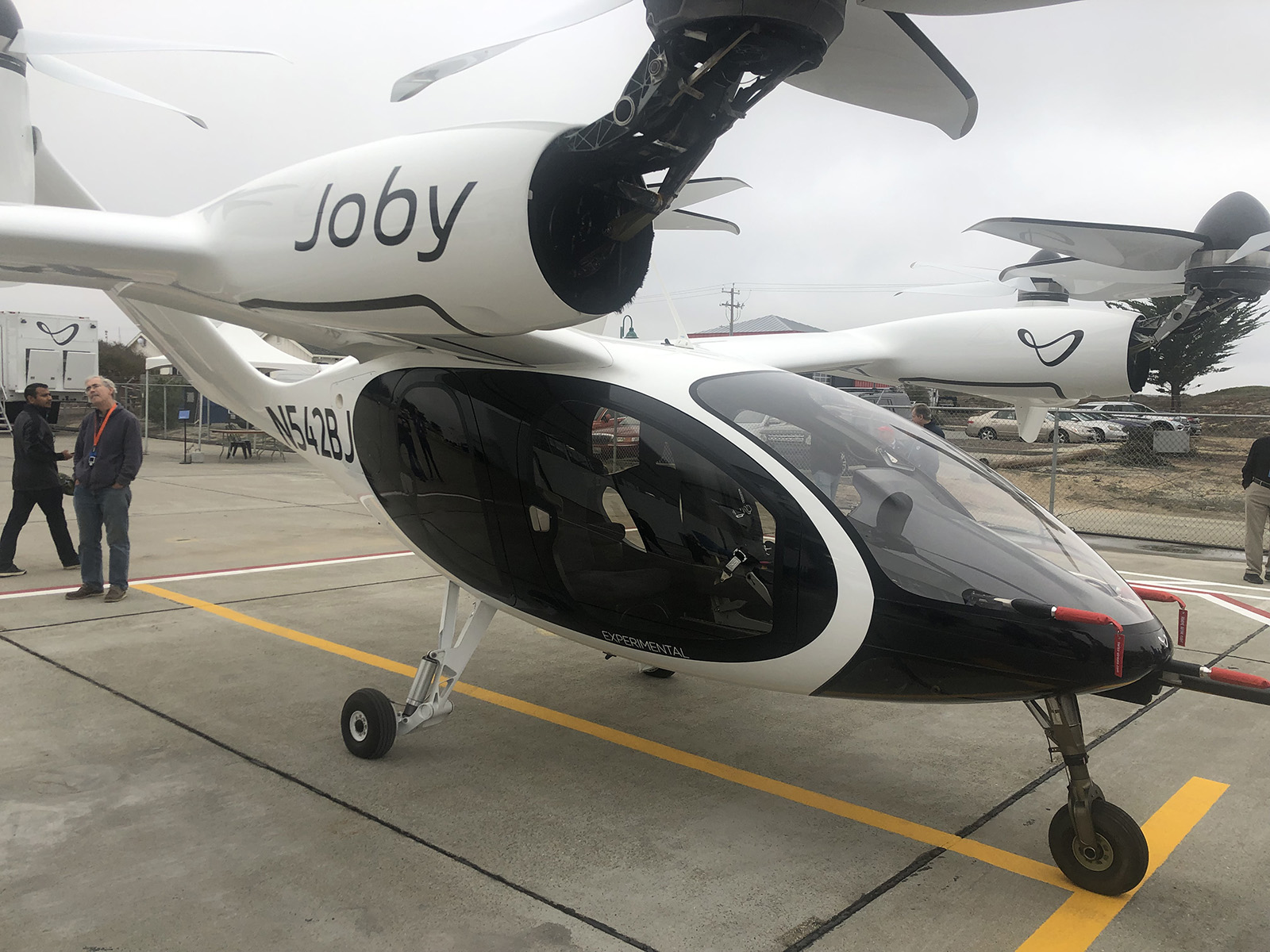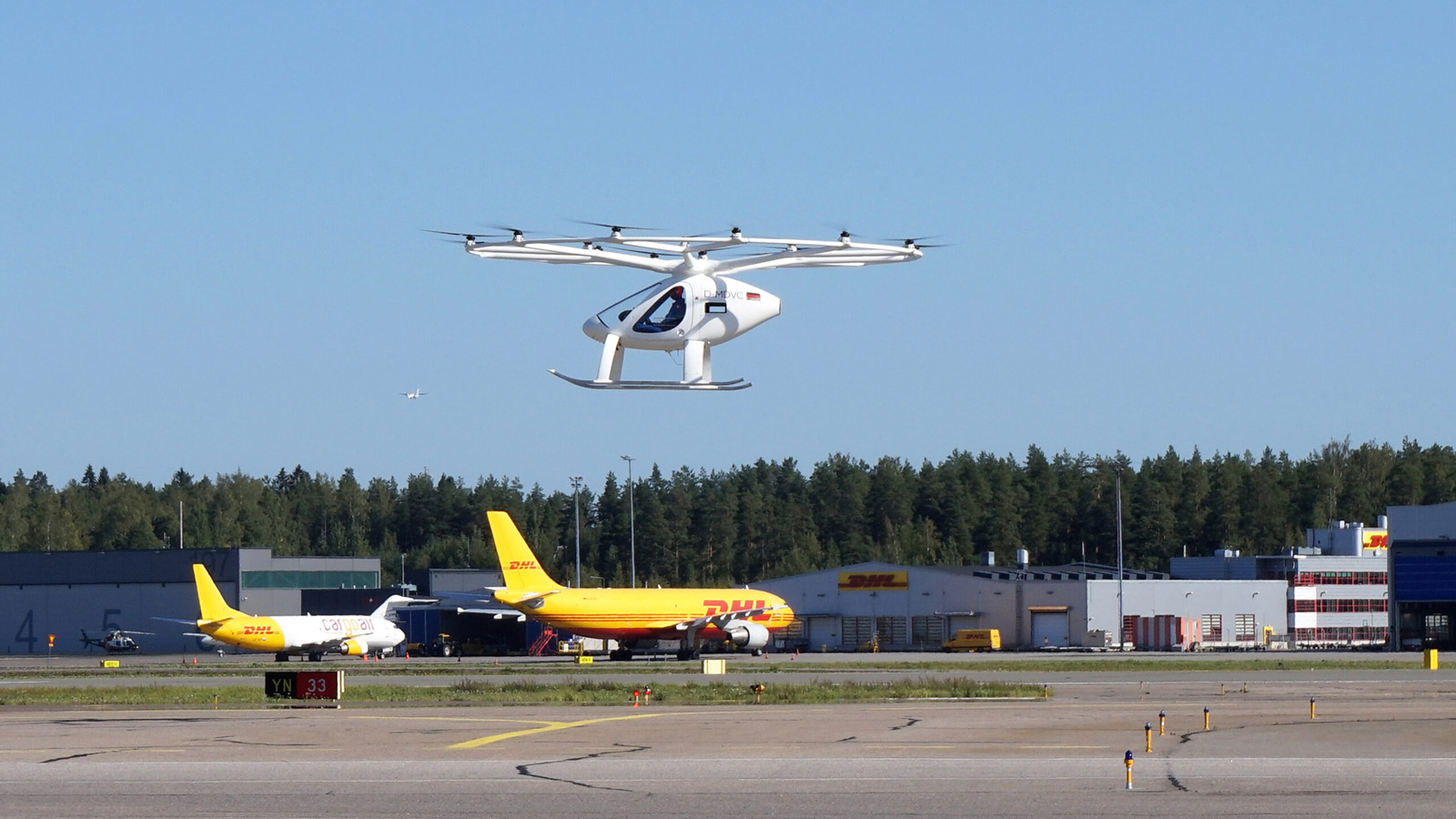Stay Up to Date
Submit your email address to receive the latest industry and Aerospace America news.
Major developers of electric aircraft have struck agreements with American, Delta, United
As the number of startups developing electric aircraft for local transportation has proliferated, three of the major U.S.-based airlines have pledged to buy their aircraft or help the companies get off the ground.
Most recently, Delta Air Lines made a $60 million investment in California-based Joby Aviation under a “commercial and operational partnership,” according to an Oct. 11 press release from Delta. In July, American Airlines made a pre-delivery payment to U.K.-based Vertical Aerospace for 50 aircraft, part of a larger pre-order announced in June 2021. United Airlines in February 2021 said it would buy electric aircraft from California-based Archer Aviation and in September said it would also buy from Brazil-based Eve Air Mobility.
The trend applies to cargo, too. UPS in April 2021 agreed to buy 150 aircraft from Vermont-based Beta Technologies, while FedEx in March struck an agreement with Elroy Air, also based in California, to test moving shipments with its aircraft.
I got the chance to speak with executives from several of the startups and also Delta about this growing trend during events over the past two weeks, including the National Business Aviation Association’s annual exposition in Orlando, Florida, on Tuesday and Wednesday.
While there are many reasons for an electric aircraft startup to team up with an airline, the most obvious is to supply an early source of income, Tom Muniz, chief operating officer for Archer, told me at the NBAA event.
United has invested in Archer and in August paid a $10 million cash deposit on an agreement to buy up to 200 of the company’s vertical takeoff and landing aircraft, which the airline intends to operate and paint with its livery. But Archer also plans to operate its own aircraft eventually, Muniz said.
Archer has been test flying its Maker demonstrator for nearly a year. Two months ago, the company revealed the design for a larger Midnight aircraft that can seat four passengers and a pilot.
“We know that the operating business is super compelling,” Muniz said. “But we’re a startup company and we don’t bite off more than we can chew, so selling aircraft is a good way to generate revenue and reduce risk at first.”
Archer also intends to learn a lot from United’s use of their aircraft and hopes the United deal will boost confidence in its brand, he said.
“Let’s say you’re taking a flight from San Francisco to Tokyo. United will offer you the chance to check in in San Jose and fly one of our aircraft to SFO, right?” Muniz said. “We think that kind of exposure will be a huge advantage.”
Flights to airports from downtown areas or from major tourism hubs will be the easiest to begin with, like “ping-ponging back and forth,” he said.
In contrast, Joby doesn’t intend to sell any of its aircraft. But Delta, in addition to the coming $60 million investment, has an exclusive agreement to offer Joby connecting flights to major airports where Delta operates, such as Los Angeles International Airport and John F. Kennedy International Airport in New York.
Delta and Joby both are interested in offering a less stressful way to get to major airports, Delta’s Ranjan Goswami, senior vice president for customer experience design, told me during Joby’s Oct. 13 “field trip” event at its test flight center. He said Delta is impressed with Joby’s approach and its S4 aircraft, which will seat four passengers and a pilot, and with Joby’s progress — as exemplified by its obtaining its FAA Part 135 certification as an air carrier in May.
“It’s very clear that they know what they’re doing here at Joby when it comes to operations, safety and customer experience, and we’ve got to design a customer experience that is truly seamless between the handoffs, the passenger handoffs, with Joby and Delta,” Goswami said.
Asked where Joby flights will be able to land near big airports, Goswami acknowledged they may at first be landing at existing fixed-base operator locations, facilities often on the outskirts of large international airports that corporate and private jets fly in and out of.
“We want to be as integrated as we can, but we also have to get started, and we’re going to figure out the right place to start,” he said.
For Joby’s part, it was attracted to Delta’s approach and outlook toward working with a connecting service, said Paul Sciarra, the executive chairman of Joby’s board of directors.
“They thought about this relationship as something that was not going to be determined by contract terms, but by the level of alignment of our needs and strengths,” Sciarra said. He added that Joby can benefit from Delta’s experience in operations and maintenance, as Joby continues to pursue FAA type certification for its aircraft and plans to increase production.
Not everyone in the AAM industry has wanted to align with an airline yet, though, including Overair, another electric aircraft developer in California.
The company is assembling the first full-size prototype of its Butterfly aircraft, which has some of the largest rotors in the fledgling AAM industry at 6 meters in diameter and capacity to carry a pilot and five passengers. Due to the large size of the rotors, Overair believes its aircraft will be able to rotate more slowly and therefore be quieter than competitors.
“We haven’t ruled it out, but we’re not focused on it,” said CEO and co-founder Ben Tigner when I met him at the company’s display on the NBAA conference exposition floor on Wednesday.
Tigner said of an airline partnership, “We’re still working on our strategy, and we believe we have some advantages. We’re waiting to see other developments or shakeouts in the industry.”
Overair has signed an agreement with Houston-based helicopter operator Bristow Group to cooperate on certifying and commercializing Butterfly. Tigner said Bristow aligns better with Overair’s business strategy than a large airline.
“Airlines have maximized their business model to serve a large number of people in a specific way, and they’re very good at it,” he said. “I’m just not sure air taxis will match up well with that business model. It would be like giving Greyhound a bunch of cars to operate, in which case they’re no longer Greyhound; they’d become another Uber.”
Get the latest news about advanced air mobility delivered to your inbox every two weeks.
About paul brinkmann
Paul covers advanced air mobility, space launches and more for our website and the quarterly magazine. Paul joined us in 2022 and is based near Kennedy Space Center in Florida. He previously covered aerospace for United Press International and the Orlando Sentinel.
Related Posts
Stay Up to Date
Submit your email address to receive the latest industry and Aerospace America news.





